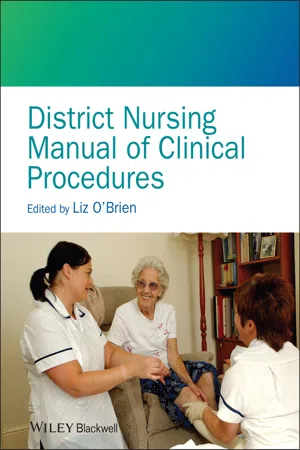Control of Blood Glucose Concentration
The control of blood glucose concentration involves the regulation of glucose levels in the bloodstream to maintain homeostasis. This process is primarily managed by the hormones insulin and glucagon, which are produced by the pancreas. Insulin lowers blood glucose levels by promoting the uptake of glucose by cells, while glucagon raises blood glucose levels by stimulating the release of glucose from the liver.
4 Key excerpts on "Control of Blood Glucose Concentration"
- eBook - ePub
The Endocrine System
Systems of the Body Series
- Joy P. Hinson, Peter Raven, Shern L. Chew(Authors)
- 2013(Publication Date)
- Churchill Livingstone(Publisher)
...11 INSULIN AND THE REGULATION OF PLASMA GLUCOSE Chapter objectives After studying this chapter you should be able to: 1. Explain how plasma glucose concentrations are maintained within a normal range. 2. Explain the mechanisms controlling the secretion of insulin. 3. Describe the actions of insulin. 4. Explain the consequences of a deficiency in insulin production or action. 5. Describe the main treatment options for type 1 and type 2 diabetes mellitus. 6. Describe the ‘metabolic syndrome’. Introduction The brain uses glucose, its main energy source, at a much faster rate than any other tissue in the body (Fig. 11.1). It is perhaps surprising, therefore, that the brain does not keep significant stores of glucose. Instead, the brain relies on obtaining a constant supply of glucose from the blood. As a result, the brain is extremely sensitive to a fall in blood glucose levels. On the other hand, a sustained high level of blood glucose causes problems due to the increased osmolarity of blood; ultimately this leads to tissue damage as a result of inappropriate glycosylation in body tissues. Circulating concentrations of glucose are therefore maintained within relatively tight limits. This requires a complex system of control because plasma glucose levels can rise rapidly after a meal, but could also become very low during periods of fasting. Figure 11.1 Whole-body fluoro-deoxyglucose positron emission tomography (FDG-PET) scan, showing sites of glucose uptake, obtained following administration of a derivative of glucose as a ‘tracer’. The main ‘hotspot’ of glucose uptake is clearly the brain...
- eBook - ePub
- Liz O'Brien, Liz O'Brien(Authors)
- 2012(Publication Date)
- Wiley-Blackwell(Publisher)
...The target HbA1c for patients with diabetes is 7.5%, although this will vary depending on the patient. A figure of 6.5% is suggested for patients thought to be at increased risk of developing complications (NICE 2002). Metabolic Control (Physiology of Blood Glucose) As the level of glucose in the blood rises, the beta cells in the pancreas produce insulin. This decreases the blood sugar by binding with receptors on the cell surfaces, making the cell membranes permeable to glucose in order for: muscle cells to use the glucose for energy fat cells to metabolise glucose to be stored as triglycerides insulin production to enable the liver cell enzymes to convert glucose into glycogen, triglycerides, proteins and amino acids, for use elsewhere in the body insulin production to inhibit fat breakdown, which prevents the liver from making ketones. (Williams & Pickup 2003) As the blood glucose levels fall in response to insulin production, the alpha cells in the pancreas produce glucagon. This binds with the liver cell receptors to initiate the following chain reaction. Stored glycogen is broken down into glucose (glycogenolysis). New glucose molecules are converted from amino acids (gluconeogenesis). Blood glucose level rises. Glucagon, adrenaline, cortisol and growth hormone are released, which helps to inhibit the action of the insulin. (Williams & Pickup 2003) Any illness or infection can have an impact on diabetes control...
- Katsuya Nagai(Author)
- 2022(Publication Date)
- Routledge(Publisher)
...Chapter 1 HOMEOSTATIC CONTROL OF ENERGY METABOLISM DOI: 10.1201/9781315138985-1 I. HISTORICAL BACKGROUND OF "HOMEOSTASIS" In 1849 Bernard 1 found that stimulation of the floor of the fourth cerebral ventricle in dog caused glycosuria. This phenomenon is now known as “piqure diabétique” and became the first evidence for central regulation of blood glucose level. Besides this finding Bernard made a number of essential discoveries in the field of physiology, including glycogen and gluconeogenesis. The term “internal secretion”, which is now preferentially used for endocrinology, was also created by him; it originally meant a phenomenon such as a glucose release into the bloodstream from the liver. Based on these findings, Bernard established a notion of “constancy of the internal environment (milieu interieur)” of the body by which animals could cope with severe environmental changes and still survive. Almost a century later, Bernard’s concept was followed by that of Cannon 2 which was based on endocrinological and neurological aspects. His experimental results led to the realization that the autonomic nervous system was involved. On the basis of these findings, Cannon extended Bernard’s concept to “homeostasis”, in which the internal environment would remain relatively constant even though it might vary. Since then, much additional attention has been directed to the contributions of the central and autonomic nervous systems to homeostatic controls of blood glucose. II. HOMEOSTATIC CONTROL OF ENERGY METABOLISM A. WHY SHOULD HOMEOSTASIS OF THE LEVEL OF BLOOD GLUCOSE BE MAINTAINED? The central nervous system (CNS) of human beings or other mammals requires glucose as a sole energy source. Neuronal cells are so sensitive that they cannot survive in culture even in the presence of adequate oxygen if glucose is not supplied, immediately after the cells are isolated from brains of embryonic or infantile animals. Moreover, the CNS needs a large quantity of energy...
- eBook - ePub
- David A Bender, Shauna M C Cunningham(Authors)
- 2021(Publication Date)
- CRC Press(Publisher)
...expression of key enzymes in metabolism. • describe and explain the factors involved in the selection of fuels for muscle activity under different conditions • describe and explain the biochemical basis of the metabolic derangements in diabetes mellitus and the metabolic syndrome. 10.1 Patterns of Metabolic Regulation The rate at which different pathways operate is controlled by changes in the activity of key enzymes. In general, the first reaction unique to a given pathway or branch of a pathway will be most subject to regulation, although the activities of other enzymes are also regulated. The enzymes that exert the greatest control over flux (flow of metabolites) through a pathway are often those that catalyze essentially unidirectional reactions, that is, those for which the substrates and products are far from thermodynamic equilibrium. Within any one cell the activities of regulatory enzymes may be controlled by two mechanisms that act instantaneously: • the availability of substrates • inhibition or activation by accumulation of precursors, end products or intermediates of a pathway. On a whole body basis, metabolic regulation is achieved by the actions of hormones. A hormone is released from the endocrine gland (Figure 10.1) in which it is synthesized in response to a stimulus such as the blood concentration of metabolic fuels, other hormones or neuronal control. It circulates in the bloodstream and acts only on target cells that have receptors for the hormone, although all cells on the body are exposed to the hormone. Figure 10.1 The major endocrine organs. In addition, adipose tissue and various regions of the gastrointestinal tract secrete hormones. Paracrine agents are locally acting hormones that are secreted into the interstitial fluid (rather than the bloodstream) by cells that are close to the target cells...



